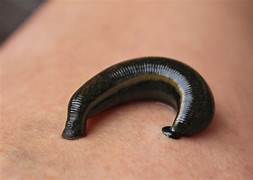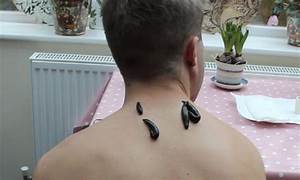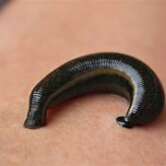Leech Therapy: Nature’s Surprising Healer for Modern Ailments

When you hear the word “leech,” your first thought might be of slimy creatures clinging to people in swamps or rivers. But here’s the surprise: leeches have been used as healers for thousands of years, and even in today’s world of advanced medicine, they still play an important role.
Leech therapy, also known as hirudotherapy, may sound unusual, but it’s gaining attention as a natural treatment for pain relief, circulation problems, and even complex surgeries. This fascinating practice blends ancient wisdom with modern science, making leeches an unlikely yet powerful ally in healthcare.
The Ancient Origins of Leech Therapy
Historical Uses in Traditional Medicine
Leech therapy isn’t a new discovery—it’s one of the oldest medical practices known to humanity. Ancient Egyptians, Greeks, and Indians used leeches to treat various conditions ranging from headaches to skin diseases. In fact, leeches were once considered a “cure-all” and were commonly used in medieval Europe to balance the body’s “humors.”
In Ayurvedic and Unani medicine, leeches were applied to remove “impure” blood, reduce inflammation, and promote healing. Despite the lack of modern scientific knowledge, these cultures recognized the powerful effects leeches had on health.
Why Leeches Were Considered Natural Healers
People in the past believed leeches helped cleanse the body by removing toxins. While their understanding was rooted in tradition, modern science now supports some of these claims. Leech saliva contains natural compounds with anti-inflammatory, anticoagulant, and pain-relieving properties. These discoveries prove that ancient healers were onto something long before medical research could explain it.
How Leech Therapy Works
The Science Behind Leech Saliva
So, what makes leeches so special? The secret lies in their saliva. When a leech attaches to the skin, it releases more than 100 bioactive substances. Some of the most important include:
- Hirudin – A natural anticoagulant that prevents blood clotting.
- Calin – Helps blood flow freely after the leech detaches.
- Analgesics – Provide natural pain relief during the process.
- Enzymes – Reduce inflammation and promote healing.
This unique combination helps improve blood circulation, reduce swelling, and even encourage tissue regeneration.
What a Typical Leech Therapy Session Looks Like
If you’re imagining a horror movie scene, relax—it’s much more controlled. A trained practitioner places a few medical-grade leeches on the targeted area, usually where circulation is poor or pain is present.
The leeches attach, draw a small amount of blood, and release their healing saliva. Sessions typically last 20–45 minutes, and the leeches are carefully removed once they’ve done their job. The small marks left behind usually heal quickly.
Health Benefits of Leech Therapy
Pain Relief and Improved Blood Circulation
One of the most well-known benefits of leech therapy is improved circulation. By thinning the blood and preventing clots, leeches help blood flow more freely. This makes them especially useful for conditions like varicose veins, deep vein thrombosis, or arthritis.
Many patients also report significant pain relief. Since leech saliva contains natural analgesics, the therapy can soothe sore joints and muscles without the side effects of strong medications.
Skin Health and Reconstructive Surgery Support
Leeches have found a surprising place in modern plastic and reconstructive surgery. After surgeries like skin grafts or reattachments, leeches help restore blood flow to delicate tissues. Without this, new skin or reattached parts might not survive.
In dermatology, leech therapy is sometimes used to treat skin conditions such as acne, eczema, and even early signs of aging by promoting circulation and detoxification.
Managing Chronic Conditions Naturally
Leech therapy has also been explored for managing chronic illnesses. Studies suggest it may benefit people with:
- Hypertension (high blood pressure)
- Osteoarthritis
- Cardiovascular conditions
- Diabetes-related complications
By supporting circulation and reducing inflammation, leech therapy provides a natural complement to conventional treatments.
Leech Therapy vs. Modern Medicine
Where They Complement Each Other
Leech therapy is not about replacing modern medicine—it’s about working alongside it. Doctors use leeches in hospitals for very specific purposes, especially in microsurgery and vascular treatments. At the same time, traditional practitioners use them in natural healing clinics to address pain and circulation issues.
For example, someone recovering from reconstructive surgery may benefit from leech therapy to improve healing, while also relying on modern antibiotics to prevent infection. This integration creates a holistic approach to health.
Concerns, Risks, and Safety Precautions
Of course, leech therapy isn’t without risks. The main concerns include:
- Infections if hygiene is not maintained.
- Excessive bleeding in people with clotting disorders.
- Allergic reactions in rare cases.
That’s why it’s essential to only undergo leech therapy with trained professionals using medical-grade leeches. These leeches are bred in sterile environments, ensuring safety and effectiveness.
The Future of Leech Therapy in Healthcare
Medical Recognition and Research
Believe it or not, the U.S. Food and Drug Administration (FDA) approved leeches as a “medical device” in 2004. This shows that science acknowledges their therapeutic potential. Research is ongoing into how leech saliva could inspire new drugs for blood disorders, heart disease, and even cancer.
With more clinical studies, leech therapy could expand its role in mainstream healthcare, especially as patients increasingly seek natural, non-invasive solutions.
Why Natural Healing Still Matters Today
In today’s fast-paced world, people are turning back to nature for healing. While advanced surgeries and medications are essential, natural therapies like leech therapy remind us that simple, ancient methods can still play an important role. They bridge the gap between traditional wisdom and modern innovation.
Conclusion
Leech therapy may sound unusual, but its healing power is undeniable. From its ancient roots in traditional medicine to its modern use in surgery and chronic disease management, leeches have proven themselves as nature’s surprising healers.
By improving circulation, relieving pain, and supporting healing, these small creatures show us that sometimes the best remedies come from the most unexpected sources. With proper training, safety measures, and scientific research, leech therapy is set to continue its journey as a natural ally in modern healthcare.

Frequently Asked Questions (FAQ)
Q1. What is leech therapy used for today?
It’s used in modern medicine for improving circulation in surgeries, and in natural healing for pain relief, skin health, and managing chronic conditions.
Q2. Does leech therapy hurt?
Not usually. Leech saliva contains natural pain-relieving compounds, so most people only feel a mild pinch when the leech attaches.
Q3. Are the leeches reused?
No. Medical-grade leeches are used only once to ensure safety and hygiene.
Q4. Is leech therapy safe for everyone?
It’s generally safe when performed by professionals, but not recommended for people with clotting disorders, severe anemia, or certain medical conditions.
Q5. Why do the marks from leech therapy last a while?
The marks may look like small bruises and can last a few days to a couple of weeks. They fade naturally as the skin heals.




